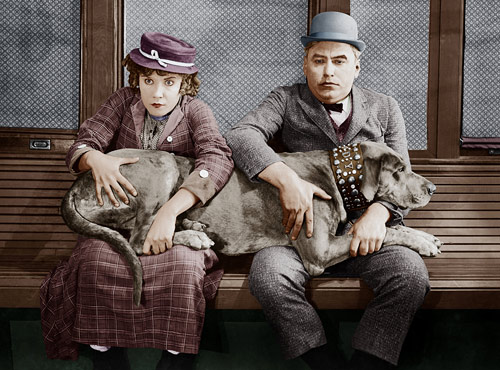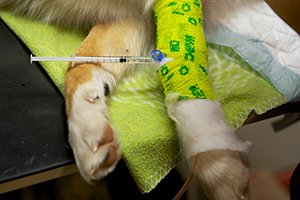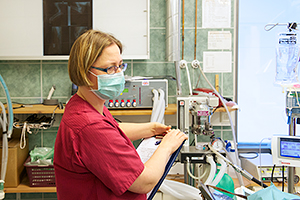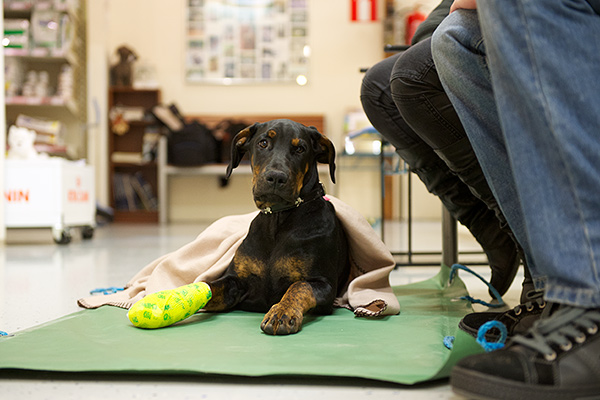Avoinna arkisin ma-to 8-20, pe 8-19.
La päivystys ajanvarauksella klo 9-17.

Some of the investigations, tests, sampling, or care procedures may require sedation. Other animal patients may be so afraid or aggressive that sedation becomes a necessity to make the patient feel relief and so that the procedure is successful.
Nowadays there are many different types of sedatives. Often the sedative used can be reversed after the care /investigation and your pet can walk out of the clinic on its own feet. If the sedative is not reversed you must let the patient wake up peacefully at home or at the clinic. The recovery period is according to the individual, but in principle your pet is wholly recovered after many hours, perhaps only the next morning.
Do not offer your pet any water or food until it is its own self again and do not try to force it to go out. A pet coming out of sedation is prone to some mishaps (urinate in its bed, defecate or vomit). Therefore at home it is worthwhile to choose an easy to clean bed for the awakening. Watch that your pet does not hurt itself trying to get up or tripping after you into the kitchen, not to mention stairs. In other words, the best place is at floor level with a warm blanket thrown on top, to keep body temperature adequate until the patient has woken up completely. Don’t leave it alone, don’t laugh if it looks like a drunkard, but also don’t express pity for it!
Give your pet that is waking from sedation a calm, safe and warm evening at home with you!


You will be informed when booking the appointment whether you’re pet will be sedated and you will receive instructions about a possible food and/or water fast which must be done before going to the clinic. Follow the instructions received closely and also explain the rules of the game to other family members – one hungry evening is not allowed, even if you’re pet comes begging for food.
Narcosis, putting the patient to sleep, is necessary in different surgical procedures. For surgical, having fasted for 12 hours, the patient first receives so-called pre-medication, which will relax and calm the patient. After this a cannula is put in a vein, through which are administered the necessary medication, pain killers, antibiotics and physiological fluid therapy. The patient is intubated (a tube is inserted into the trachea) and it will breathe a narcotic gas/oxygen mixture throughout the operation. During the surgery itself the wellbeing, body functions and the depth of the narcosis is monitored all the time (pulse, oxygen measurement, intravenous drip) – just like in human surgeries.
It is not possible to reverse narcosis in the same manner as sedation. The patient will awaken from narcosis according to its individual timetable and your pet will only be able to go home when we at the clinic have ascertained that the post-op awakening has occurred without any problems.


The body temperature of an animal patient upon waking from narcosis is lower than normal and it may have shiver due to the cold. In winter take along in the car a warm travelling blanket for the patient and warm up the car first. Carry the patient into your home to a warm, dry place where there are no drafts. Put it on a rug or its bed and check that the breathing channels are open and that its tongue is hanging out of the mouth. When coming out of narcosis the animal patient does not control its movements immediately, nor do the muscles which control closing the bladder and the intestine do not function normally at once. Therefore some unintentional accidents may happen inside the house.

Do not leave your pet alone, but give it the opportunity to wake up peacefully in a calm, familiar environment and under your surveillance. Don’t be frightened if your dog coughs upon waking up. The narcotic gases used during surgery are administered through the intubation tube into the dogs’ respiratory tract, and because of this its throat might momentarily be a little sore and provoke coughing.
Every surgery patient receives written follow-up care instructions from the clinic, which contain all the necessary information on the patient for drinking, eating, being moved, what medication to take and when, and also on the follow-up inspection.
